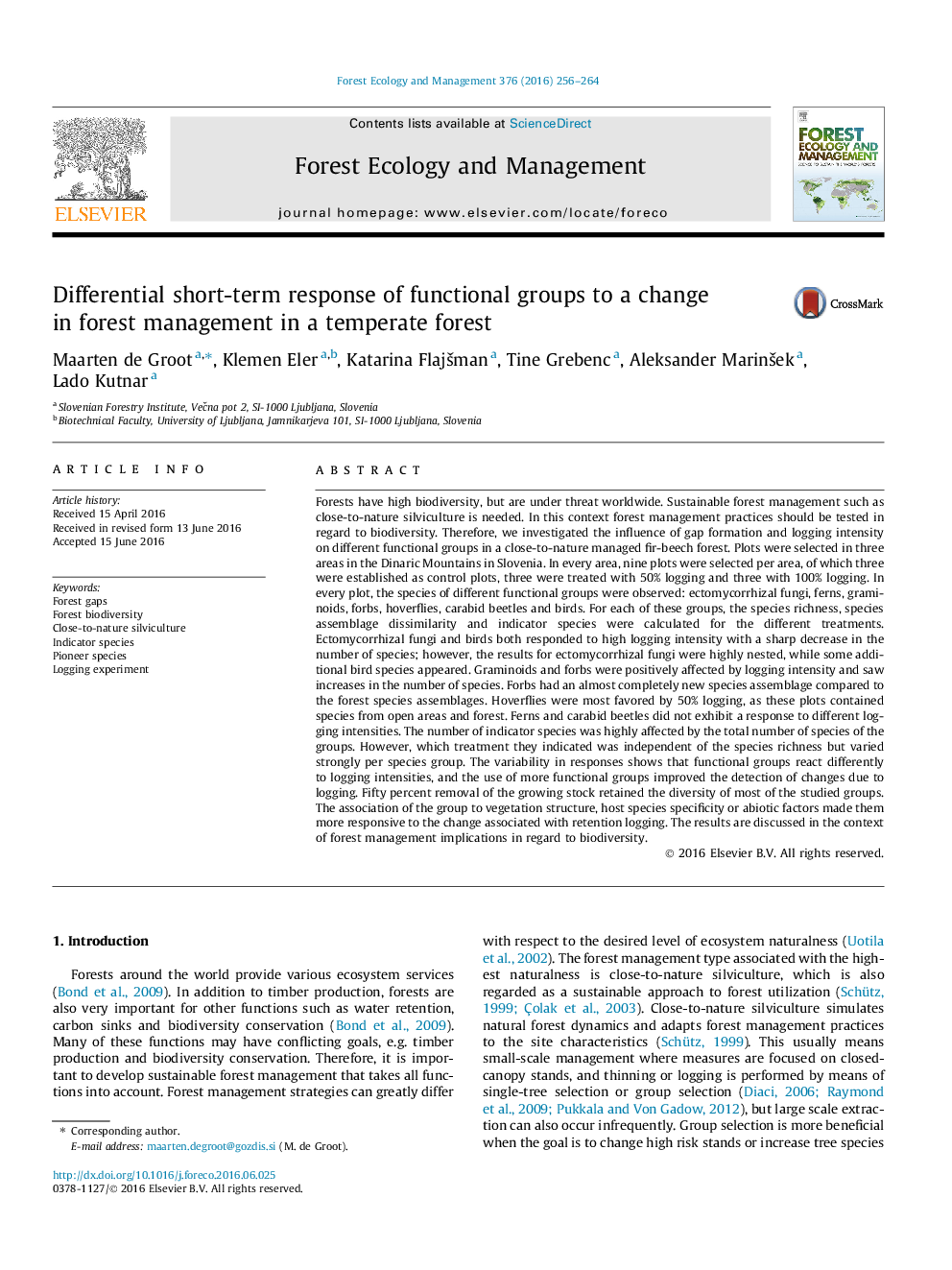| کد مقاله | کد نشریه | سال انتشار | مقاله انگلیسی | نسخه تمام متن |
|---|---|---|---|---|
| 6542136 | 159145 | 2016 | 9 صفحه PDF | دانلود رایگان |
عنوان انگلیسی مقاله ISI
Differential short-term response of functional groups to a change in forest management in a temperate forest
ترجمه فارسی عنوان
پاسخ کوتاه مدت گروه های کاربردی به تغییر در مدیریت جنگل در جنگل معتدل
دانلود مقاله + سفارش ترجمه
دانلود مقاله ISI انگلیسی
رایگان برای ایرانیان
کلمات کلیدی
شکاف های جنگل، تنوع زیستی جنگل، جنگلداری نزدیک به طبیعت، گونه های شاخص، گونه های پیشگام، آزمایش ورودی
موضوعات مرتبط
علوم زیستی و بیوفناوری
علوم کشاورزی و بیولوژیک
بوم شناسی، تکامل، رفتار و سامانه شناسی
چکیده انگلیسی
Forests have high biodiversity, but are under threat worldwide. Sustainable forest management such as close-to-nature silviculture is needed. In this context forest management practices should be tested in regard to biodiversity. Therefore, we investigated the influence of gap formation and logging intensity on different functional groups in a close-to-nature managed fir-beech forest. Plots were selected in three areas in the Dinaric Mountains in Slovenia. In every area, nine plots were selected per area, of which three were established as control plots, three were treated with 50% logging and three with 100% logging. In every plot, the species of different functional groups were observed: ectomycorrhizal fungi, ferns, graminoids, forbs, hoverflies, carabid beetles and birds. For each of these groups, the species richness, species assemblage dissimilarity and indicator species were calculated for the different treatments. Ectomycorrhizal fungi and birds both responded to high logging intensity with a sharp decrease in the number of species; however, the results for ectomycorrhizal fungi were highly nested, while some additional bird species appeared. Graminoids and forbs were positively affected by logging intensity and saw increases in the number of species. Forbs had an almost completely new species assemblage compared to the forest species assemblages. Hoverflies were most favored by 50% logging, as these plots contained species from open areas and forest. Ferns and carabid beetles did not exhibit a response to different logging intensities. The number of indicator species was highly affected by the total number of species of the groups. However, which treatment they indicated was independent of the species richness but varied strongly per species group. The variability in responses shows that functional groups react differently to logging intensities, and the use of more functional groups improved the detection of changes due to logging. Fifty percent removal of the growing stock retained the diversity of most of the studied groups. The association of the group to vegetation structure, host species specificity or abiotic factors made them more responsive to the change associated with retention logging. The results are discussed in the context of forest management implications in regard to biodiversity.
ناشر
Database: Elsevier - ScienceDirect (ساینس دایرکت)
Journal: Forest Ecology and Management - Volume 376, 15 September 2016, Pages 256-264
Journal: Forest Ecology and Management - Volume 376, 15 September 2016, Pages 256-264
نویسندگان
Maarten de Groot, Klemen Eler, Katarina Flajšman, Tine Grebenc, Aleksander Marinšek, Lado Kutnar,
